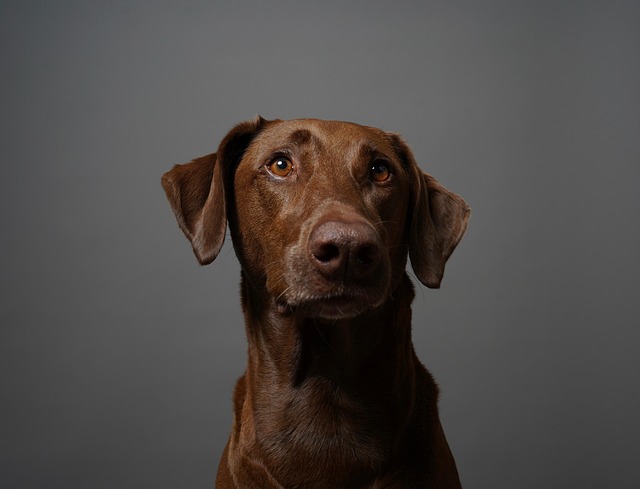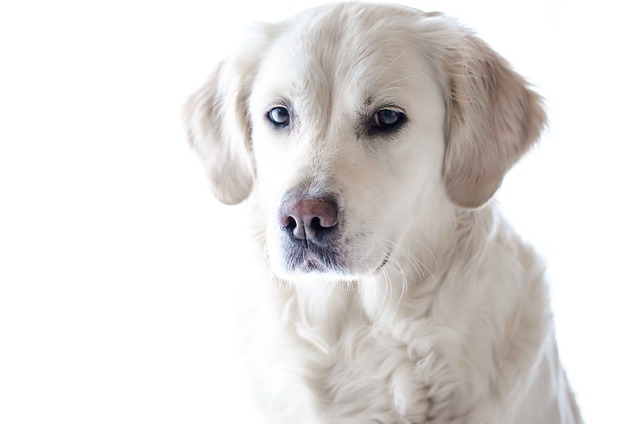
What is glaucoma in a dog?
You might notice your dog squinting more at mealtime or avoiding bright sunlight—these small changes could be early signs of a serious eye condition.
Dogs are the warm companions in our lives. When they show symptoms of a cold and sneezing, we are filled with worry. Seeing the usually lively little ones become listless and sneeze from time to time, we wish we could take their discomfort upon ourselves. Therefore, understanding how to treat a dog with a cold and sneezing scientifically and effectively is of great importance to every dog lover.
There are various reasons why a dog may have a cold and sneeze. The primary factor is the environmental factor. When the seasons change, especially in the cold autumn and winter, if the dog is not properly kept warm when the temperature drops suddenly, it is prone to catching a cold due to the invasion of cold air. The humid environment also cannot be ignored. Staying in a humid environment for a long time can reduce a dog's immunity, creating conditions for the invasion of viruses and bacteria. For example, during the plum - rain season in the south, dogs at home are more likely to show cold symptoms. Secondly, viral and bacterial infections are common causes. Viruses such as canine distemper virus and canine parainfluenza virus can cause respiratory tract infections in dogs, leading to colds and sneezing. Moreover, close contact between dogs can easily spread these pathogens. If you take your dog to places with a high concentration of pets, such as pet parks or pet hospitals, there is a relatively high risk of infection. In addition, a dog's low immunity is also a key factor. Malnutrition, lack of exercise, and over - fatigue can all weaken a dog's immune system function, making it unable to effectively resist the invasion of germs. For instance, dogs that have been fed low - quality dog food and lack essential nutrients are more likely to get sick.
A dog with a cold and sneezing will exhibit a series of obvious symptoms. In terms of mental state, a dog that was originally lively and active will become listless, losing interest in playing and going out, often lying quietly in a corner. Its appetite will also decline significantly, and it may even show no interest in its favorite food. In the respiratory aspect, frequent sneezing is the most obvious manifestation, and it may also be accompanied by coughing. Initially, it may be an occasional mild cough, but as the condition progresses, the cough may become more severe and frequent. Some dogs may also have a runny nose. At first, the nasal discharge may be clear, but if a secondary bacterial infection occurs, the nasal discharge may become thick and yellow. In addition, the body temperature may rise. The normal body temperature of a dog is between 37.5°C - 38.5°C, and during a cold, the temperature may rise to 39°C or even higher.
 When you find that your dog has symptoms of a cold and sneezing, an accurate diagnosis is the prerequisite for effective treatment. The owner can first make a preliminary observation and judgment, such as observing the dog's mental state, appetite, body temperature, nasal discharge, and coughing. However, to obtain an accurate diagnosis, it is best to take the dog to a pet hospital. Veterinarians generally conduct a detailed inquiry, understanding the dog's recent living conditions, vaccination status, etc., and then perform a comprehensive physical examination, including auscultating the heart and lungs and palpating the trachea. If necessary, laboratory tests such as blood routine and C - reactive protein tests will also be carried out to determine whether there is an infection and the type of infection, so as to develop a targeted treatment plan.
When you find that your dog has symptoms of a cold and sneezing, an accurate diagnosis is the prerequisite for effective treatment. The owner can first make a preliminary observation and judgment, such as observing the dog's mental state, appetite, body temperature, nasal discharge, and coughing. However, to obtain an accurate diagnosis, it is best to take the dog to a pet hospital. Veterinarians generally conduct a detailed inquiry, understanding the dog's recent living conditions, vaccination status, etc., and then perform a comprehensive physical examination, including auscultating the heart and lungs and palpating the trachea. If necessary, laboratory tests such as blood routine and C - reactive protein tests will also be carried out to determine whether there is an infection and the type of infection, so as to develop a targeted treatment plan.
Treating a dog with a cold and sneezing requires a combination of multiple methods. If the cold is caused by a viral infection, there is currently no specific antiviral drug, and treatment mainly focuses on symptomatic treatment and supportive treatment. For example, to relieve the dog's fever, pet - specific antipyretics can be used, but the dosage must be strictly controlled according to the veterinarian's advice to avoid harming the dog due to improper use of the drug. For the cough symptom, antitussive drugs can be used to help the dog relieve the discomfort caused by coughing. If a secondary bacterial infection occurs, the veterinarian will select appropriate antibiotics for treatment according to the type of bacteria causing the infection. During the treatment process, supplementing nutrition and water is also crucial. Provide the dog with nutritious and easily digestible food, such as nutritional paste and canned food, to ensure that it intakes sufficient protein, vitamins, and minerals to enhance its body's resistance. At the same time, ensure that the dog can drink clean warm water at any time to prevent dehydration.
In addition to drug treatment, careful nursing also plays a key role in the dog's recovery. Create a warm, dry, and quiet resting environment for the dog to avoid it being stimulated by cold and humidity again. You can lay soft cushions and blankets in the dog's kennel to make it feel comfortable. In addition, the owner should spend more time with the dog, giving it love and comfort. When a dog is sick, its heart is relatively fragile, and the owner's company can make it feel warm and at ease, which is conducive to the recovery of the condition.
Although a dog's cold and sneezing are not particularly serious diseases, they still require our full attention. Every dog is an important member of our family. When they are sick, we need to be more patient and careful. Through accurate diagnosis, scientific treatment, and careful nursing, we believe that the dog will soon regain its former vitality and continue to accompany us through wonderful times. Let's use our love to protect the health of dogs and let them grow up happily under our care.

You might notice your dog squinting more at mealtime or avoiding bright sunlight—these small changes could be early signs of a serious eye condition.

Let’s set the scene: It’s a sweltering Phoenix afternoon—105°F outside—and you rushed your 2-year-old Lab mix, Cooper, on a quick walk to “get it over with.”

Let’s get real: You’re in your Miami apartment, watching your 3-year-old Corgi, Loki, struggle to climb the stairs to your second-floor unit.

Many dog owners brush off occasional scratching as just “dog behavior,” but persistent itching often signals something more—like a food allergy.

You might first notice your dog scratching more than usual—chewing at their paws until the fur looks thin, or rubbing their face against the couch nonstop.

Let’s be real: You’re standing in your Chicago apartment, watching your 3-year-old Beagle, Max, huff and puff just to climb onto the couch.